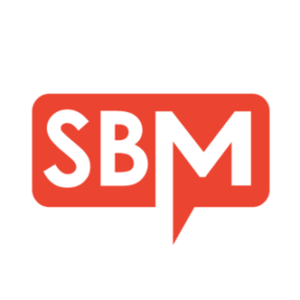Backlinks have long been one of the primary factors used by Google and other search engines to rank websites and pages. If you want to rank in Google search, you’re going to have to build backlinks.
The problem is that, unless you have built up a large number of followers, it is unlikely you will gain very many links directed to your content.
What is Link Building?
Link building is the process of gaining inbound links (also called backlinks) to a website (or blog) from external sources.
The goal of link building is to increase future search traffic from Google, although backlinks from popular sites can also be an excellent source of referral traffic.
The number of inbound links to your page (also called link popularity) has a high correlation with Google ranking.
Inbound link signals have a much higher correlation score than individual on-page factors such as meta tags, keyword usage, etc.
What Kind of Backlinks Will Help Your Page Rank in Google?
From Google’s perspective, each link to a website is considered a “vote”. The more votes a site accumulates, the more likely it will receive a higher quality score. However, Google doesn’t view all backlinks the same. Google will assign a different “weight” to the link depending on these factors:
Authority of the linking page
The higher a site is ranked, the higher the authority. You can view the rating of the domain and URL by using Moz Link Explorer.
NoFollow links
Paid links generally have the rel=”nofollow” attribute applied. Some SEO experts feel that NoFollow links lower the domain authority, but this is not always true. For example, Wikipedia contains NoFollow links but since the site has “high trust”, the NoFollow links don’t penalize the page.
Link placement
Links that are placed within content are considered higher ranking because it is more likely to be a legitimate backlink designed to benefit the reader, as opposed to trying to sell something.
Anchor text
Anchor text is considered a higher rank than non-anchor text. Anchor text is the text used to “anchor” a link. Here’s an example of an article by Ahrefs about anchor text as a Google ranking factor.
Link relevancy
The Google algorithm is pretty smart. It is able to determine the “relevancy” of a link based on the context of the link to the content on the page. The more relevant Google determines a link is, the higher it will rank.
Unnatural links
Links that Google determines to be “unnatural” are likely to be discounted and won’t contribute toward the ranking of the page. Multiple unnatural links can cause your site to be penalized and even blacklisted.
In general, most backlinks where there has been an editorial decision to link to your content should be safe. Also, links built manually with building traffic in mind should be fine. Here are some examples of links that are most likely going to be safe:
- Guest blogging
- Directory submissions
- Press release distribution
- Blog commenting
- Niche forums, community sites, questions
Any links intended to manipulate ranking may be considered an unnatural link and are a violation of Google’s Webmaster Guidelines.
Here are some scenarios that could cause Google to penalize your site:
- Links from “spun” content (using software to “spin” original content into tens or hundreds of other articles)
- Comment or forum spam is usually generated using software such as a scrapebox. Usually, comment spam is nonsensical or not related to the content on the site.
- Obvious paid links when they are non-editorial and designed to pass PageRank.
- Low quality, bulk directory submissions (usually on low-quality sites)
- Links from bad neighborhoods (unsavory sites) or link farms are likely to be penalized
- Links from lots of foreign language sites that is different than the language of your site (i.e. lots of links coming from sites written in Farsi)
- Poor quality links from sites that are not relevant in any way to your website
- Private or Public Blog Networks that are built for the sole purpose of linking to a primary site
- Excessive, non-niche relevant reciprocal link building. While reciprocal linking is common, make sure they are niche relevant and add value to the reader
- Broken links don’t do your site any good. I recommend using a link checker app to check your links once a month or so. I use the Google Chrome extension Check My Links.
Ready to get busy building links to your website? Here are the top twelve most popular and effective link building strategies.
Link bait
While it might sound a little shady, it’s not. Link baiting is creating natural content that other sites want to link to due to its high value or uniqueness. These types of links are considered earned rather than built. The value that is given is usually derived from research, unique data, a survey, attractive graphics or a free tool. The “bait” is the high-quality resource. A great example of link bait (that I use often) is CoSchedule’s Headline Analyzer.
Ego bait
Ego bait is when someone mentions an influencer who then links to that content. Examples include:
- Interviewing an influencer and publishing the interview on your site
- Including an influencer in an expert roundup
- Quoting an influencer in your content, or linking to their site
- Including an influencer in a top 10 list
Most influencers will be happy to at least share content in which they are mentioned, amplifying the reach and providing a backlink to your site.
Broken link building
This is another tactic that might seem shady but it’s not. Broken link building is where you identify content on an influencer site that includes broken links that can’t be fixed. This is usually because the original content no longer exists. By creating alternative content that is relevant, you can contact the webmaster and offer them to link to your content instead. This is a fairly common, and successful, tactic. Universities or government resource pages are often good influencer sources to tap.
Link reclamation
Link reclamation is where you fix broken links pointing to your site (i.e. broken internal links), finding and actively monitoring for unlinked brand mentions and identifying uncredited use of copyrighted material (i.e. photos or video).
Here’s how you reclaim links:
- For fixing broken internal links, run My Link Checker and create 301 redirects using a redirection plugin (WordPress or Apache).
- For fixing unlinked brand mentions, you need to first identify sites that are mentioning your school. Consider using a Google Alert or Mention to identify mentions that aren’t linking to your site. Reach out to the site, thank them for the mention, and ask if they would consider adding a link.
- When someone uses your copyrighted material (such as a photo or video) it is an opportunity for you to ask them for attribution including a link to your site. Try using Google’s reverse image search to find sites using your copyrighted images.
Newsjacking
Newsjacking is where you tap into trending news and inject your ideas into the story. This can be an effective way to pick up high-quality links from major publications. With newsjacking, timing is everything. The basic idea is to identify breaking news and write content that pertains to the news story as well as your school.
Here’s a great example of newsjacking. A few years ago Kate Winslet was visiting Sir Richard Branson at a private retreat in the British Virgin Islands when a fire broke out. Winslet carried Branson’s elderly mother out of the fire to safety. The story was picked up worldwide. The London Fire Brigade found the story to be pretty amazing and offered to include Winslet in their next firefighting training at their local training center. The London Fire Brigade received a ton of site traffic, inbound links and media exposure from that story. Try to think of ways you too could newsjack a story and drive traffic – and links – to your site.
Guest blogging
Guest blogging is an effective way to get your school in front of new audiences and build authority-boosting links. High-quality guest blogging is a preferred method of gaining white-hat links. Want to learn more about guest blogging? Check out this article from Backlinko.
Interviews
Interviewing can take on many forms, such as:
- Blog interviews
- Expert roundup posts
- Podcasts
- Webinars
The goal is to grow awareness of your school and pick up some quality links along the way. These are the kinds of links that drive traffic, so are very much recommended for link building.
Infographics
Infographics are a great tactic for building links. They are particularly effective at maximizing a return on your outreach effort. Outreach is more effective when you have something of value to offer the host site, and offering to provide a high-quality, relevant infographic (consider including a customized introduction) is a way to exchange value. The host site gets some great content – and you get a backlink. I use Canva or Infogram for my infographics, but there are many other tools out there to explore.
Content syndication
Syndicating your content indiscriminately is not recommended, but syndicating your content to quality sites with link attribution can lead to a boost in traffic. Some of the sites I recommend include:
To get the most out of syndicating your content, consider writing a platform-specific title and introduction to each article.
Repurpose your content
This is a great way to gain more value from your content and acquire high-quality links. The way this works is that you take good content – a blog post, for example – and repurpose it as a video, infographic, ebook or SlideShare presentation.
There are many relevant channels to share quality content. Repurposing is considered to be amplification and is therefore a white hat method of building links. Just make sure the content you repurpose is high quality and useful to your target audience.
Directory submissions
Directory submissions can be good or bad, depending on the directory’s strength. Make sure the directory you are submitting to is applicable to your audience, the directory has been around a while, the directory does not contain a lot of spammy links, and check to make sure the page where your link would be placed is cached by Google. You can use SmallSEOTools’ Google Cache Checker to check it before you publish to it.
Press release distribution
Publishing a press release out a to a network of media outlets can be a useful SEO tactic if you have something newsworthy to publish. Don’t use this tactic often or indiscriminately, or Google will notice and penalize you. But if you have a legitimate event you want to promote, a news release might be a good tactic.
Here are a few credible press release services to consider:
There are other link building tactics such as blog commenting, participating in forums, answering questions in Quora or Answers, sponsoring events or content but these should be used with caution, and only done if they are relevant and have value to your target audience.
Click here to read this article on the SchneiderB Media website.


![[GUIDE] Beginner's SEO Checklist for Schools](https://www.schoolhouse.agency/wp-content/uploads/2021/08/GUIDE-Beginners-SEO-Checklist-for-Schools.png)
![[TOOLS] 7 Ways to Get Your School Blog Ranked High in Google](https://www.schoolhouse.agency/wp-content/uploads/2021/08/TOOLS-7-Ways-to-Get-Your-School-Blog-Ranked-High-in-Google-1024x377.png)


